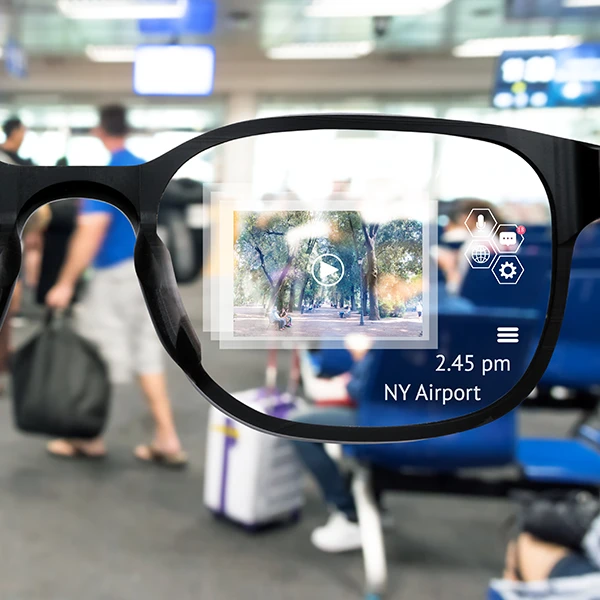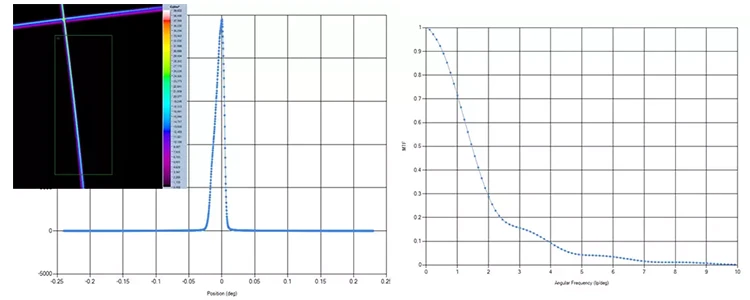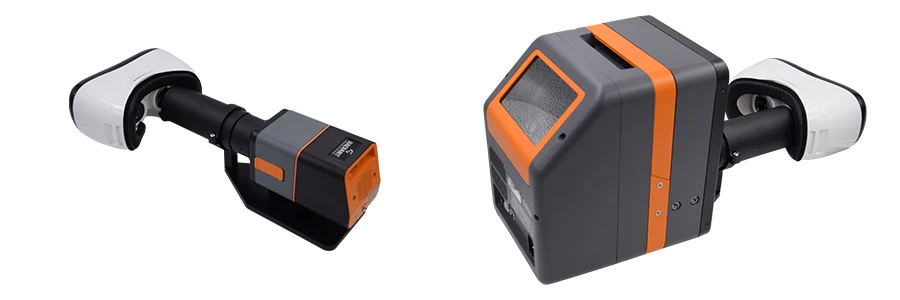The Significance of MTF (Modulation Transfer Function) in Testing AR/VR/MR Displays

The rapidly evolving augmented reality (AR), virtual reality (VR), and mixed reality (MR) technologies require a specialized testing approach that differs from conventional display in methodology, including optical geometries. There are many key factors to consider when evaluating AR/VR/MR displays, like the field of view (FOV) and issues like ghosting, distortion, etc. One particularly significant factor to consider when testing AR/VR/MR displays is the modulation transfer function (MTF). The MTF is a quantitative measure used to evaluate the imaging quality of optics, like lenses, AR/VR optics, etc., in terms of resolution and contrast.
MTF as a Measure of Display Metrology System Capability
In the context of a display metrology system, MTF describes the ability of a system’s lenses to transfer contrast from an object to an image at a given resolution. MTF is one of a measure commonly used to evaluate the resolution and contrast performances of a display metrology system. A low or poor MTF can introduce challenges in determining whether the observed performance is the result of the inherent characteristics of the device under test (DUT) or the limitations of the lenses and the overall system.
MTF as a Measure of AR/VR/MR Displays Visual Output Quality
The sharpness or clarity of projected images relies on the AR/VR/MR displays’ capability to represent contrast accurately, which plays a crucial role in distinguishing different image elements and enhancing overall image quality. The spatial contrast of AR/VR/MR displays is primarily evaluated using MTF, which entails the evaluation of the intersection of dark and bright image areas using methods like Line Pairs (Michelson contrast calculation), Slant Edge, or Line Spread.
Measuring spatial contrast through MTF using the Line Pairs method involves displaying parallel lines with varying spatial frequencies and measuring the contrast between the bright and dark lines. The orientation of the line pairs can be horizontal, vertical, etc., and the contrast is calculated using the Michelson contrast formula, which compares the difference in intensity between the bright and dark lines.
The slant edge method involves analyzing the edge profile of a slanted edge target. The target comprises a smooth transition from a bright to a dark region, usually in the form of a slanted line or wedge. This method utilizes the edge spread function to describe how light spreads across the transition from bright to dark. After Fourier transform, the MTF curve is derived, representing the display’s ability to transfer contrast at different spatial frequencies.
The Line Spread method used a single line of pixels to measure the Line Spread Function (LSF) directly instead of measuring the contrast of the edge. This method is ideal when it comes to evaluating pixelated displays. It depends on the frequency changes across a single line of illuminated pixels, thus, eliminating the pixel-to-pixel frequencies issue that arises during the evaluation of pixelated displays.

Example of a MTF Line Spread Method. Image courtesy of Radiant Vision Systems, LLC.
AR/VR/MR Display Metrology Measurement System
Precise measurement and qualification of AR/VR/MR displays are essential to ensure optimal visual quality and an immersive user experience and require a specialized measurement system. Radiant Vision Systems, a Konica Minolta Sensing Group Company, offers an AR/VR/MR display measurement system comprising a ProMetric® imaging colorimeter/photometer, an AR/VR lens, and TrueTest software with TT-ARVR™ module that can address the unique needs of evaluating AR/VR/MR displays. This flexible and innovation AR/VR/MR display measurement system offers standard display metrology tests for luminance, chromaticity, uniformity, pixel defects, etc., along with AR/VR/MR specific tests like Image clarity (MTF), FOV measurement, image distortion and ghosting, focus uniformity, etc.

ProMetric® Y imaging photometer with AR/VR Lens (left) and ProMetric® I imaging colorimeter with AR/VR Lens (right). Image courtesy of Radiant Vision Systems, LLC.
Interested in learning more about the AR/VR/MR display measurement system? Or perhaps require assistance in finding suitable instruments and software for testing your AR/VR/MR devices? Get in touch with our team of experts for a free consultation.
